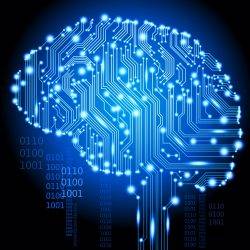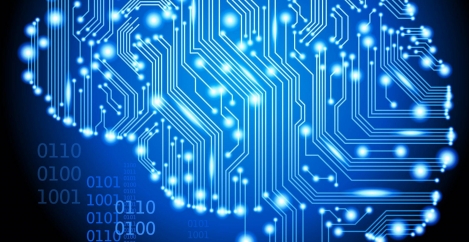October 24, 2016
Gartner report identifies the Top 10 strategic technology trends for 2017 0
 A new report from tech analysts Gartner highlights the top technology trends the firm believes will be ‘strategic for most organisations in 2017’. Gartner defines a strategic technology trend as one with substantial disruptive potential that is just beginning to break out of an emerging state into broader impact and use or which are rapidly growing trends with a high degree of volatility reaching tipping points over the next five years. They include artificial intelligence, blockchain, intelligent devices, digital technology platforms and advanced machine learning.
A new report from tech analysts Gartner highlights the top technology trends the firm believes will be ‘strategic for most organisations in 2017’. Gartner defines a strategic technology trend as one with substantial disruptive potential that is just beginning to break out of an emerging state into broader impact and use or which are rapidly growing trends with a high degree of volatility reaching tipping points over the next five years. They include artificial intelligence, blockchain, intelligent devices, digital technology platforms and advanced machine learning.
The top 10 strategic technology trends for 2017 identified in the report are:
AI and Advanced Machine Learning
Artificial intelligence (AI) and advanced machine learning (ML) are composed of many technologies and techniques (e.g., deep learning, neural networks, natural-language processing [NLP]). The more advanced techniques move beyond traditional rule-based algorithms to create systems that understand, learn, predict, adapt and potentially operate autonomously. This is what makes smart machines appear “intelligent.”
“Applied AI and advanced machine learning give rise to a spectrum of intelligent implementations, including physical devices (robots, autonomous vehicles, consumer electronics) as well as apps and services (virtual personal assistants [VPAs], smart advisors), said VP David Cearley. “These implementations will be delivered as a new class of obviously intelligent apps and things as well as provide embedded intelligence for a wide range of mesh devices and existing software and service solutions.”
Intelligent Apps
Intelligent apps such as VPAs perform some of the functions of a human assistant making everyday tasks easier (by prioritising emails, for example), and its users more effective (by highlighting the most important content and interactions). Other intelligent apps such as virtual customer assistants (VCAs) are more specialised for tasks in areas such as sales and customer service. As such, these intelligent apps have the potential to transform the nature of work and structure of the workplace.
“Over the next 10 years, virtually every app, application and service will incorporate some level of AI,” said Cearley. “This will form a long-term trend that will continually evolve and expand the application of AI and machine learning for apps and services.”
Intelligent Things
Intelligent things refer to physical things that go beyond the execution of rigid programing models to exploit applied AI and machine learning to deliver advanced behaviors and interact more naturally with their surroundings and with people. As intelligent things, such as drones, autonomous vehicles and smart appliances, permeate the environment, Gartner anticipates a shift from stand-alone intelligent things to a collaborative intelligent things model.
Virtual and Augmented Reality
Immersive technologies, such as virtual reality (VR) and augmented reality (AR), transform the way individuals interact with one another and with software systems. “The landscape of immersive consumer and business content and applications will evolve dramatically through 2021,” said Cearley. “VR and AR capabilities will merge with the digital mesh to form a more seamless system of devices capable of orchestrating a flow of information that comes to the user as hyperpersonalized and relevant apps and services. Integration across multiple mobile, wearable, Internet of Things (IoT) and sensor-rich environments will extend immersive applications beyond isolated and single-person experiences. Rooms and spaces will become active with things, and their connection through the mesh will appear and work in conjunction with immersive virtual worlds.”
Digital Twin
A digital twin is a dynamic software model of a physical thing or system that relies on sensor data to understand its state, respond to changes, improve operations and add value. Digital twins include a combination of metadata (for example, classification, composition and structure), condition or state (for example, location and temperature), event data (for example, time series), and analytics (for example, algorithms and rules).
Within three to five years, hundreds of millions of things will be represented by digital twins. Organisations will use digital twins to proactively repair and plan for equipment service, to plan manufacturing processes, to operate factories, to predict equipment failure or increase operational efficiency, and to perform enhanced product development. As such, digital twins will eventually become proxies for the combination of skilled individuals and traditional monitoring devices and controls (for example, pressure gauges, pressure valves).
Blockchain and Distributed Ledgers
Blockchain is a type of distributed ledger in which value exchange transactions (in bitcoin or other tokens) are sequentially grouped into blocks. Each block is chained to the previous block and recorded across a peer-to-peer network, using cryptographic trust and assurance mechanisms. Blockchain and distributed-ledger concepts are gaining traction because they hold the promise to transform industry operating models. While the current hype is around the financial services industry, there are many possible applications including music distribution, identity verification, title registry and supply chain.
Conversational System
The current focus for conversational interfaces is focused on chatbots and microphone-enabled devices (e.g., speakers smartphones, tablets, PCs, automobiles). However, the digital mesh encompasses an expanding set of endpoints people use to access applications and information, or interact with people, social communities, governments, and businesses. The device mesh moves beyond the traditional desktop computer and multiple devices to encompass the full range of endpoints with which humans might interact. As the device mesh evolves, connection models will expand and greater cooperative interaction between devices will emerge, creating the foundation for a new continuous and ambient digital experience.
Mesh App and Service Architecture
In the mesh app and service architecture (MASA), mobile apps, web apps, desktop apps and IoT apps link to a broad mesh of back-end services to create what users view as an “application.” The architecture encapsulates services and exposes APIs at multiple levels and across organisational boundaries balancing the demand for agility and scalability of services with composition and reuse of services. The MASA enables users to have an optimised solution for targeted endpoints in the digital mesh (e.g., desktop, smartphone, automobile) as well as a continuous experience as they shift across these different channels.
Digital Technology Platforms
Digital technology platforms provide the basic building blocks for a digital business and are a critical enabler to become a digital business. Gartner has identified the five major focal points to enable the new capabilities and business models of digital business — information systems, customer experience, analytics and intelligence, the IoT, and business ecosystems. Every organisation will have some mix of these five digital technology platforms. The platforms provide the basic building blocks for a digital business and are a critical enabler to become a digital business.
Adaptive Security Architecture
The intelligent digital mesh and related digital technology platforms and application architectures create an ever-more-complex world for security. “Established security technologies should be used as a baseline to secure Internet of Things platforms,” said Cearley. “Monitoring user and entity behaviour is a critical addition that is particularly needed in IoT scenarios. However, the IoT edge is a new frontier for many IT security professionals creating new vulnerability areas and often requiring new remediation tools and processes that must be factored into IoT platform efforts.”















